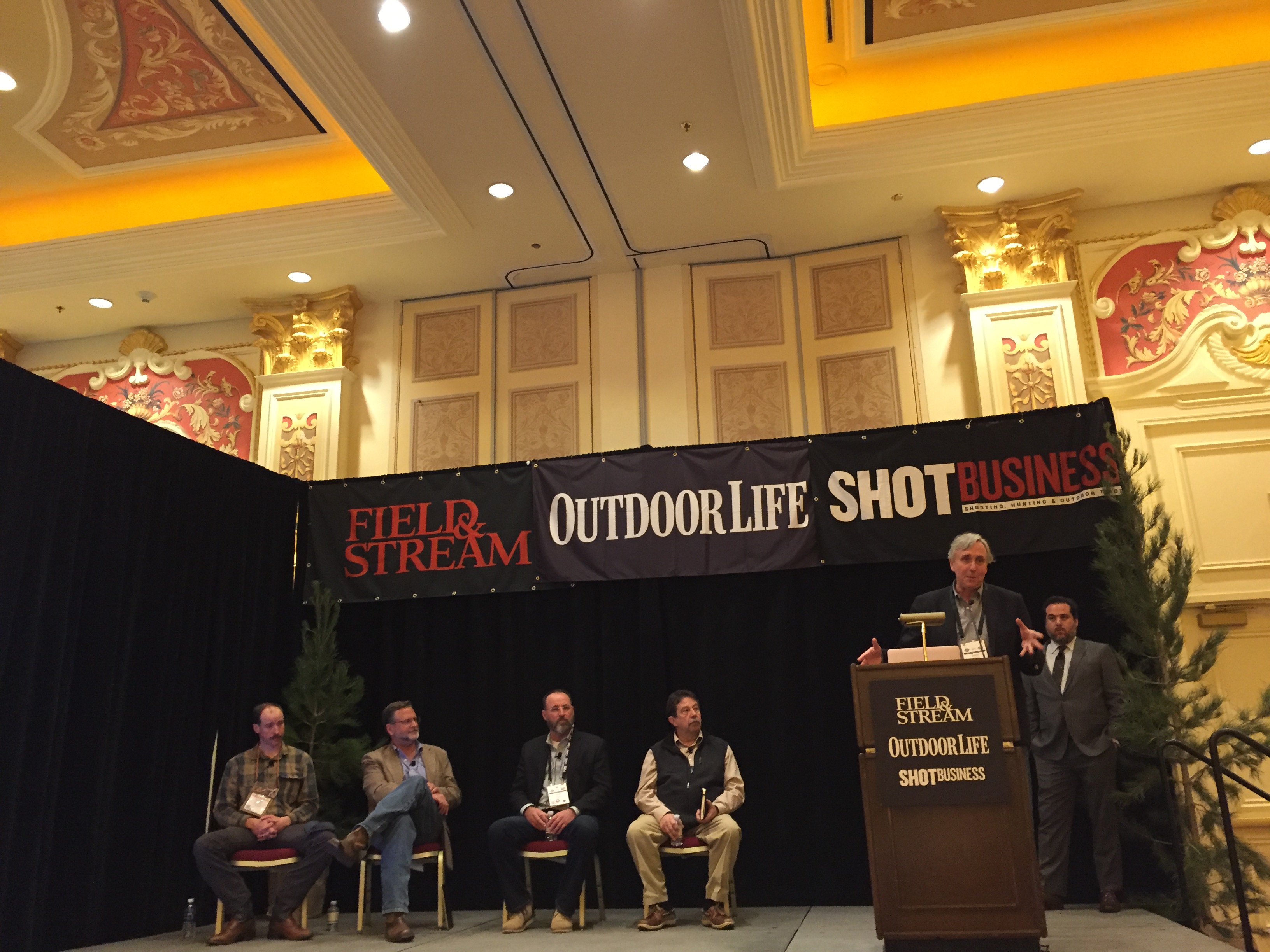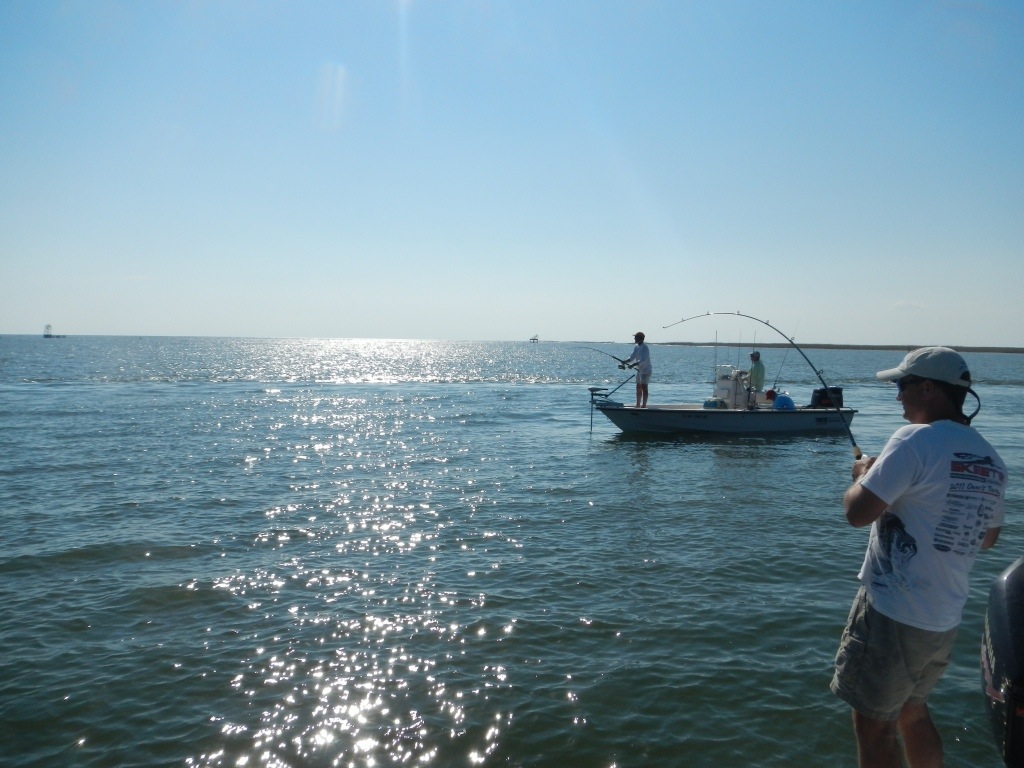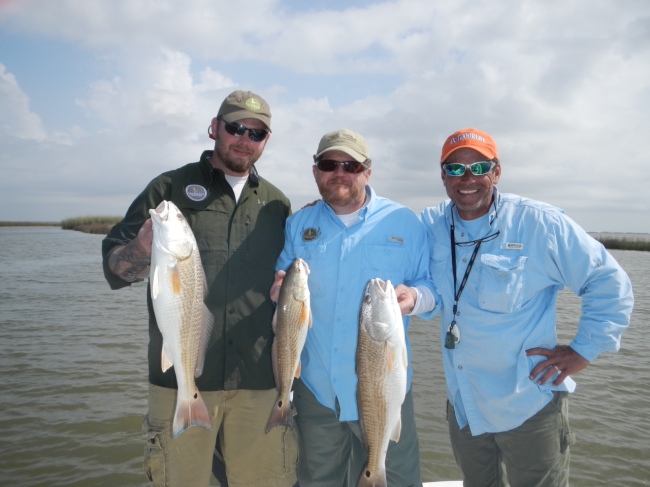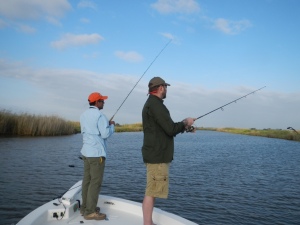Next week the shooting, hunting and outdoors industry again will engage in one of the largest trade shows I’ve ever experienced. The SHOT Show is the once-a-year gathering place for manufacturers, wholesalers, retailers, publishers and wildlife conservation organizations. It’s where a passion for firearms, ammunition and outdoors equipment, plus the industry’s unified support for the Second Amendment, are on display.

Author Lew Carpenter at SHOT Show 2012 Media Day with a Smith and Wesson M&P 15 in .300.
This is the 35th annual SHOT Show. The first SHOT Show was in 1979 in St. Louis, Missouri, and more than 60,000 professionals in the shooting, hunting and outdoors industry attended SHOT Show in 2012. In addition more than 2,000 members of the outdoor and mainstream media, including international media, cover the show.
It’s an incredible event, and one where today’s important issues will be discussed with, no doubt, a wide spectrum of opinions. Top-tier issues that affect this industry will certainly include universal background checks for gun buyers, modern sporting rifles and high-capacity ammunition magazines.
In 2012, modern sporting rifles (like the one seen in the picture above) accelerated in popularity. This year’s show will be no different, with an abundance of peripheral accessories to compliment these popular rifles. As hunters and shooting enthusiasts we all have a responsibility to engage in honest, open discussion about the safety of our communities and family members. SHOT Show is an important gathering place where people of integrity will have these discussions.
Other issues of concern to sportsmen will also be on tap. Primarily, conservation.
Personally, I have been engaged for the past four years in the Vanishing Paradise campaign – a movement to restore the Louisiana wetlands. And, as many of you understand, the Mississippi River Delta supports incredible fishing and is the winter home for 70-percent of the waterfowl in the Central and Mississippi flyways.

Vanishing Paradise team members Andy McDaniels and Land Tawney wait for waterfowl in the Louisiana wetlands.
Due to efforts by Vanishing Paradise and other conservation organizations, The RESTORE Act last July passed through Congress with strong support from the sportsman’s community, and we can expect that most of the money (80-percent) from any Clean Water Act fines will be sent back to the states affected by the spill.
Unfortunately, the oil spill isn’t over—and America’s hunters and anglers know it.
Every week it seems that scientists discover a previously unknown consequence of the spill. For example, scientists recently announced that species like mahi mahi—if even briefly exposed to small amounts of oil while still in their eggs—grow up unable to swim as fast as unexposed fish.
It is not surprising that in one recent poll, 81% of hunters and anglers said they thought BP should pay the maximum penalty for their role in the spill.
Last month, the Department of Justice hammered out a plea agreement where BP agreed to pay $4.5 billion to settle the criminal claims against it. Importantly, the company also acknowledged negligence in the deaths of 11 rig workers.
But this criminal settlement doesn’t mean it is all over—far from it.
The Justice Department is still pursuing civil claims against BP under our nation’s environmental laws. If found guilty of gross negligence at trial—and Justice seems to think it has a strong case—BP would face fines in the range of 20 billion under the Clean Water Act alone.
The company also faces billions of dollars in assessments under the Oil Pollution Act. This law requires the company to pay the costs of restoring the Gulf back to the condition it was in at the time of the disaster. To give you a sense of the potential scale, if BP paid the same amount per gallon as Exxon did in the Valdez case, we’d be looking at roughly $30 billion dollars for restoration.
These may seem like large numbers, but it will take an investment on this scale to make the Gulf whole again. It is the Department of Justice’s job to see that BP is held fully accountable. And it is our job, as hunters and anglers, to keep the heat on the Justice Department to make sure it happens.
Please speak up and demand that BP own up to its carelessness in the Gulf and that the Justice Department hold the company fully accountable. America’s hunting and fishing legacy depends on it.
Out West
SHOT Show is also an important place to discuss areas out West where I, like many of you, hunt mule deer, elk, pronghorn and other great species. If you have an interest in supporting and saving our great western hunting legacy,  please see the Our Public Lands website. Ourpubliclands.org is a place for hunters, anglers and other outdoor enthusiasts to get information about the public lands where they enjoy their favorite activities. The public lands issues on the website focus on:
please see the Our Public Lands website. Ourpubliclands.org is a place for hunters, anglers and other outdoor enthusiasts to get information about the public lands where they enjoy their favorite activities. The public lands issues on the website focus on:
FRIENDS OF COLORADOOUTDOORS.NET
Finally, SHOT Show is a place to reconnect with old friends. And although there are too many to list here, I’m going to take a moment to highlight two great partners who have helped with the Vanishing Paradise campaign and whose senior leadership have been friends of mine for decades.
RealTree Camo has developed the industry’s most realistic pattern ever. Last week the company unveiled its new camo pattern, Realtree Xtra, also available in Realtree Xtra Green.
The breakthrough in camo pattern realism comes from a combination of design and printing technology that delivers three distinct fields within one camo pattern: a foreground, mid-ground, and background.
“New Realtree Xtra and Xtra Green truly live up to their names, giving hunters extra effectiveness in the field,” said Realtree Designer and President Bill Jordan. “All throughout the development process, we focused on creating incredible depth, visual confusion and 3D effects in the pattern mid-grounds and backgrounds while still retaining total sharpness and detail in the foreground elements. The result is as close to nature as we’ve ever gotten.”The Realtree Xtra and Realtree Xtra Green camo designs feature 12 warm, natural colors-one with more green. The new designs provide all-season utility for hunters and outdoorspeople. Its subtle shadows, highlights, and textures blend with more terrain and lighting conditions than any other camo pattern available and make Realtree Xtra the most versatile camo on the market.
And our friends at Plano Molding have completely remodeled the Plano website. The new and improved version showcases all Plano products and is much easier to navigate. It also features videos and articles by members of  Plano’s pro staff and highlights products that they personally endorse. Head on over to www.planomolding.com and have a look around.
Plano’s pro staff and highlights products that they personally endorse. Head on over to www.planomolding.com and have a look around.
Hope to see you all at SHOT Show 2013 and safe travels to the City of Sin!
Read Full Post »




























